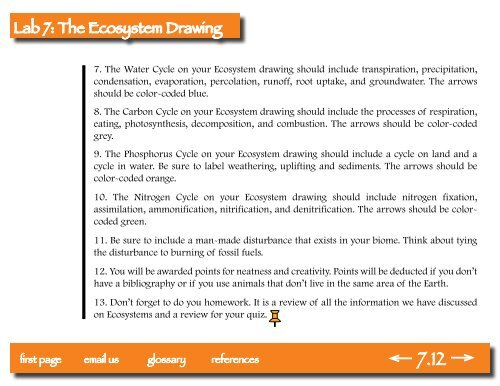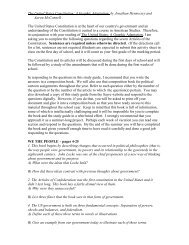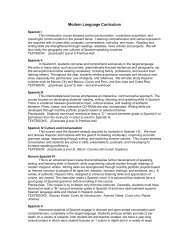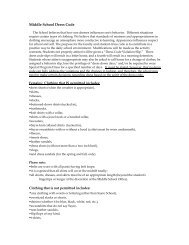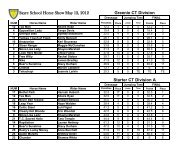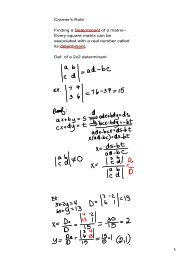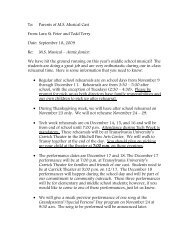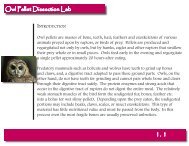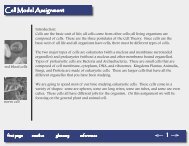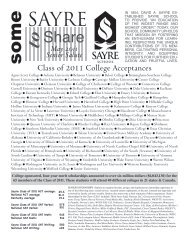Lab 7 Identifying Limiting Nutrient - Sayre School
Lab 7 Identifying Limiting Nutrient - Sayre School
Lab 7 Identifying Limiting Nutrient - Sayre School
Create successful ePaper yourself
Turn your PDF publications into a flip-book with our unique Google optimized e-Paper software.
<strong>Lab</strong> 7: The Ecosystem Drawing<br />
7. The Water Cycle on your Ecosystem drawing should include transpiration, precipitation,<br />
condensation, evaporation, percolation, runoff, root uptake, and groundwater. The arrows<br />
should be color-coded blue.<br />
8. The Carbon Cycle on your Ecosystem drawing should include the processes of respiration,<br />
eating, photosynthesis, decomposition, and combustion. The arrows should be color-coded<br />
grey.<br />
9. The Phosphorus Cycle on your Ecosystem drawing should include a cycle on land and a<br />
cycle in water. Be sure to label weathering, uplifting and sediments. The arrows should be<br />
color-coded orange.<br />
10. The Nitrogen Cycle on your Ecosystem drawing should include nitrogen fixation,<br />
assimilation, ammonification, nitrification, and denitrification. The arrows should be colorcoded<br />
green.<br />
11. Be sure to include a man-made disturbance that exists in your biome. Think about tying<br />
the disturbance to burning of fossil fuels.<br />
12. You will be awarded points for neatness and creativity. Points will be deducted if you don’t<br />
have a bibliography or if you use animals that don’t live in the same area of the Earth.<br />
13. Don’t forget to do you homework. It is a review of all the information we have discussed<br />
on Ecosystems and a review for your quiz.<br />
email us<br />
glossary 7.12


